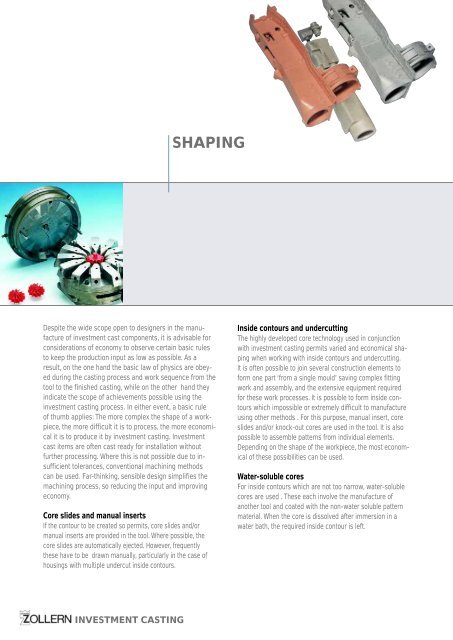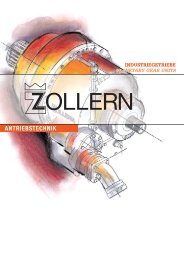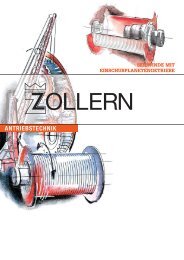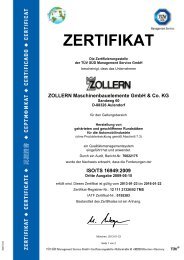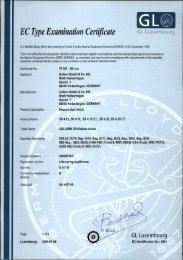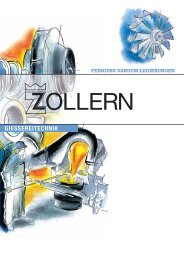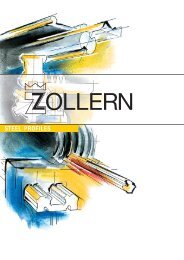FOUNDRY TECHNOLOGY - Zollern
FOUNDRY TECHNOLOGY - Zollern
FOUNDRY TECHNOLOGY - Zollern
Create successful ePaper yourself
Turn your PDF publications into a flip-book with our unique Google optimized e-Paper software.
SHAPING<br />
Despite the wide scope open to designers in the manufacture<br />
of investment cast components, it is advisable for<br />
considerations of economy to observe certain basic rules<br />
to keep the production input as low as possible. As a<br />
result, on the one hand the basic law of physics are obeyed<br />
during the casting process and work sequence from the<br />
tool to the finished casting, while on the other hand they<br />
indicate the scope of achievements possible using the<br />
investment casting process. In either event, a basic rule<br />
of thumb applies: The more complex the shape of a workpiece,<br />
the more difficult it is to process, the more economical<br />
it is to produce it by investment casting. Investment<br />
cast items are often cast ready for installation without<br />
further processing. Where this is not possible due to insufficient<br />
tolerances, conventional machining methods<br />
can be used. Far-thinking, sensible design simplifies the<br />
machining process, so reducing the input and improving<br />
economy.<br />
Core slides and manual inserts<br />
If the contour to be created so permits, core slides and/or<br />
manual inserts are provided in the tool. Where possible, the<br />
core slides are automatically ejected. However, frequently<br />
these have to be drawn manually, particularly in the case of<br />
housings with multiple undercut inside contours.<br />
Inside contours and undercutting<br />
The highly developed core technology used in conjunction<br />
with investment casting permits varied and economical shaping<br />
when working with inside contours and undercutting.<br />
It is often possible to join several construction elements to<br />
form one part ‘from a single mould’ saving complex fitting<br />
work and assembly, and the extensive equipment required<br />
for these work processes. It is possible to form inside contours<br />
which impossible or extremely difficult to manufacture<br />
using other methods . For this purpose, manual insert, core<br />
slides and/or knock-out cores are used in the tool. It is also<br />
possible to assemble patterns from individual elements.<br />
Depending on the shape of the workpiece, the most economical<br />
of these possibilities can be used.<br />
Water-soluble cores<br />
For inside contours which are not too narrow, water-soluble<br />
cores are used . These each involve the manufacture of<br />
another tool and coated with the non-water soluble pattern<br />
material. When the core is dissolved after immersion in a<br />
water bath, the required inside contour is left.<br />
INVESTMENT CASTING


